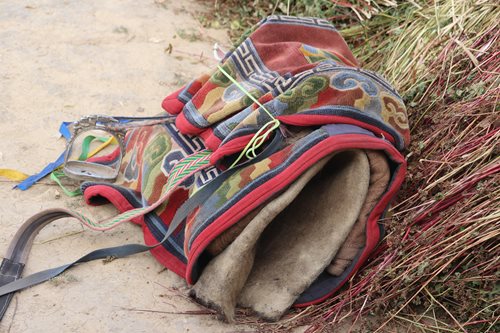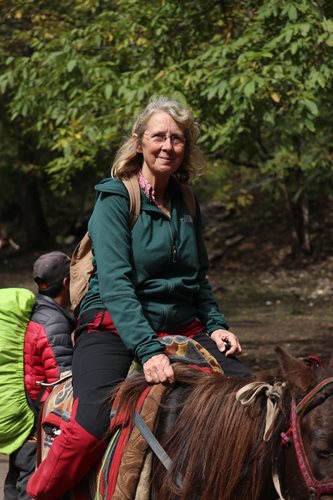Kathmandu is freshly washed with monsoon rains and, with the festivities and families reuniting to exchange tikkas and adorn each other with marigold garlands, October is a great month here. October is also a good time to escape from work; local focus is on the festivals – just as it is around Christmas in the UK, so this Dashain we thought we’d explore the last district in Nepal to have road access: Dolpo, in the north-west.
We flew from Kathmandu to Nepalgunj with Buddha Air and the plan to make the short hop north the following morning. The problem was that the Summit Air check in desk was not only unmanned but it looked like no-one had attended it for weeks. S managed to find a couple of phone numbers and when someone eventually picked up soon hung up and switched off his phone when he realised we were expecting him to sort out another flight.
No thanks to Summit we flew out the following dawn (on Tara) and I peered out feeling something was a bit wrong if some footpaths were above us; I watched the Twin Otter navigation system as we tacked between mountain ridges. Altitude is colour-coded so that risky airspace is orange and mountains are red. As we approached Juphal the safe green corridor disappeared from the map and everything showed red.
The tricky conditions didn’t seem to faze the pilot though. He spent most of the flight reading a novel. His calm was maintained as the final few hundred metres of our flight involved a sharp right turn, but then the landing was faultless.
We’d arrived at around 2500m above sea level and needed to descend to Dunai (at 2140m) so jammed into a jeep with 15 others and rattled and bumped along the winding dirt track. The drops off the edges of the ‘road’ were precipitous and I found myself arguing that the driver knew the route well and that’s how he could take the hairpins at speed and not worry that his wheels were inches from the edge at each turn. Even where the valley broadened out, the contours were so steep that the sun had effectively set by 4.30pm.
I wondered how foolish a trip this would be for me. My nervousness of heights seems to get worse each year and I was starting to suspect that taking a horse wasn’t going to be the easy solution to the challenge of my increasingly decrepit joints.
I was feeling trepidacious as I was introduced to my mount next morning. He was small and unshod but had an enormously muscly shoulder girdle. The saddle involved Tibetan carpets and wood. Reins were apparently superfluous. Bishnu would be leading the horse – I just needed to hold on to the mane.
The morning light was golden but perched up on Gora my balance felt precarious especially if I looked around too much. And was it normal to have the stirrups short – like on race-horses?
‘It is normal,’ Bishnu confirmed.
The first day took us up and down and up and along, across and above the superb raging blueness of the Suli Gad river and between giant cypress trees. At times the river was close enough for the spray to be cooling. It seemed incredible that river chats and redstarts could navigate such awesome aquatic forces.
By the time we reached Chekpa at 2720m I was experiencing pain in my butt, coccyx, quads, knees, inner thighs and back, but I hadn’t (quite) fallen off. I was just astonished that I even imagined that sitting on a horse being led at walking pace in the Himalayas would be easy.
 |
| Riding in the Himalayas? Easy?? |
 |
| The wooden base of a typical Nepali saddle for a pony |
 |
| The wooden frame is padded both for the pony and the rider but is still uncomfortable |
 |
| Who needs reins? |
The next part of this journey is described here
Pony trekking in Nepal 2